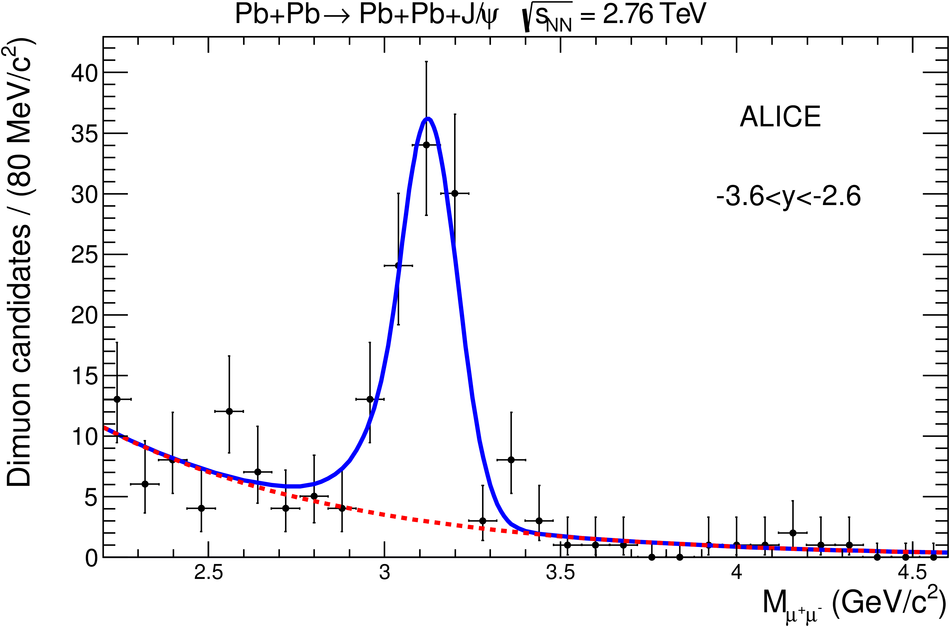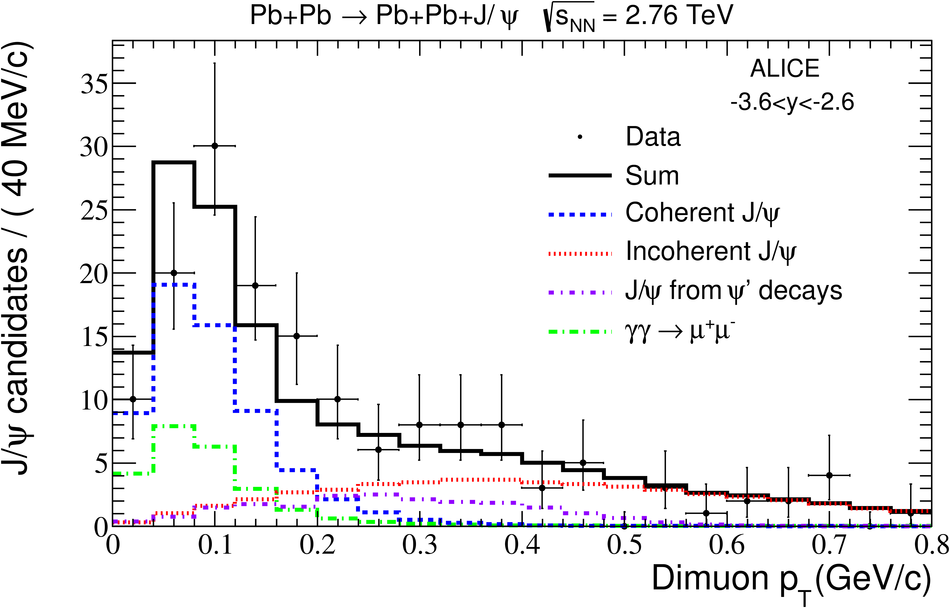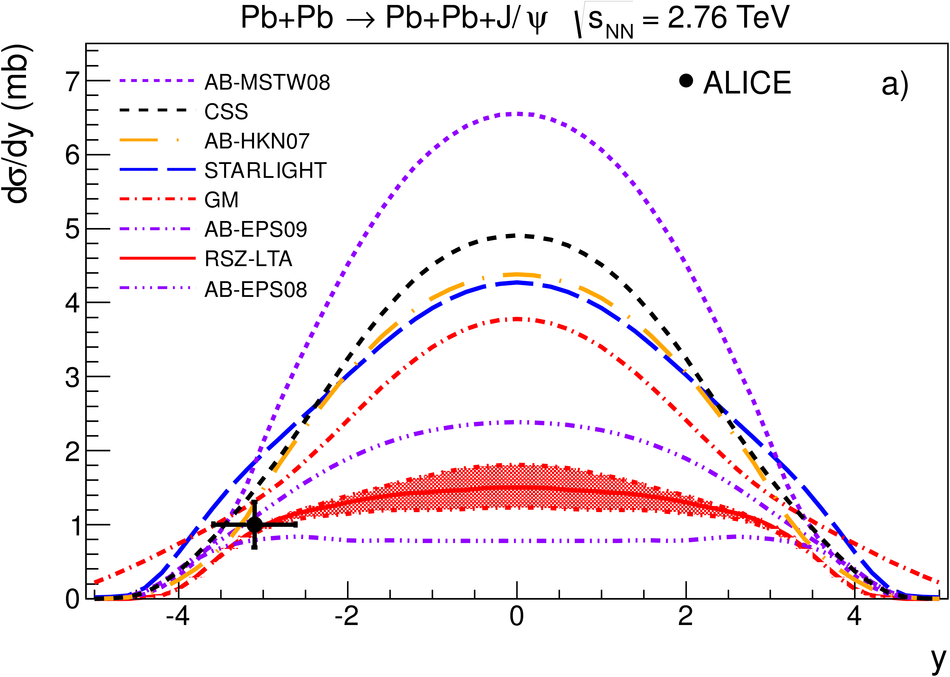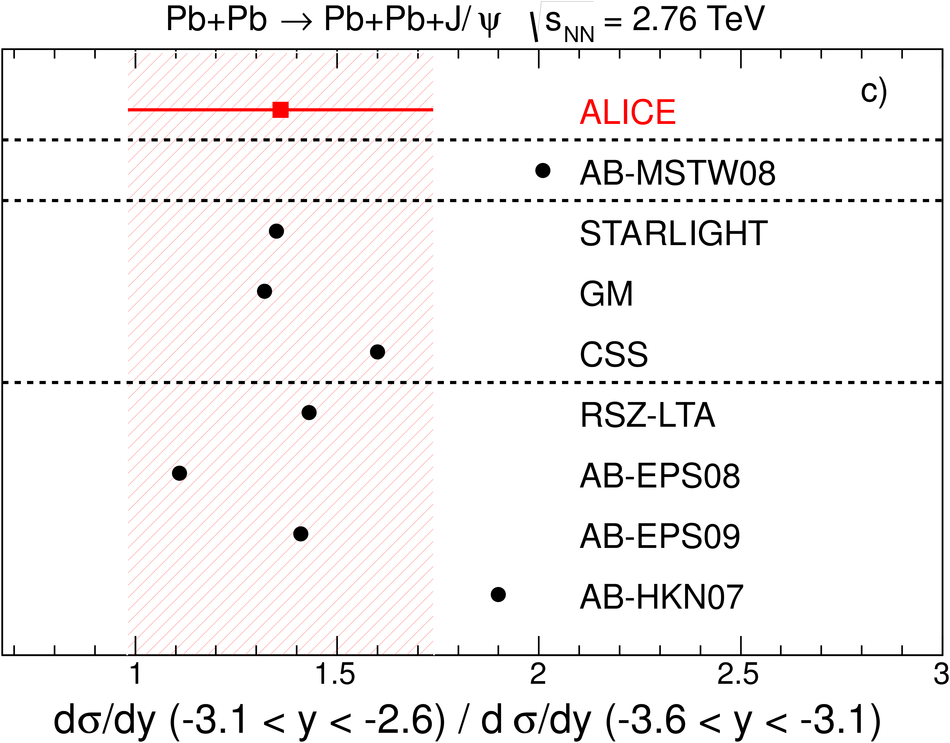The ALICE collaboration has made the first measurement at the LHC of J/$\psi$ photoproduction in ultra-peripheral Pb-Pb collisions at $\sqrt{s_{\rm NN}}$ = 2.76 TeV. The J/$\psi$ is identified via its dimuon decay in the forward rapidity region with the muon spectrometer for events where the hadronic activity is required to be minimal. The analysis is based on an event sample corresponding to an integrated luminosity of about 55 $\mu$b$^{-1}$. The cross section for coherent J/$\psi$ production in the rapidity interval $-3.6 <~ y <~ -2.6$ is measured to be d$\sigma$/d$y = 1.00 \pm 0.18$ (stat) $+0.24/-0.26$ (syst) mb. The result is compared to theoretical models for coherent J/$\psi$ production and found to be in good agreement with models which include nuclear gluon shadowing.
Phys. Lett. B 718 (2013) 1273-1283
e-Print: arXiv:1209.3715 | PDF | inSPIRE
CERN-PH-EP-2012-270





